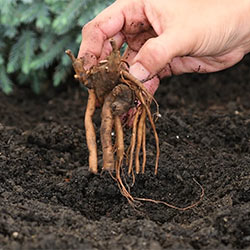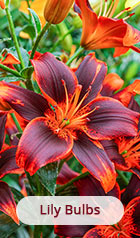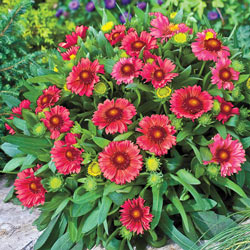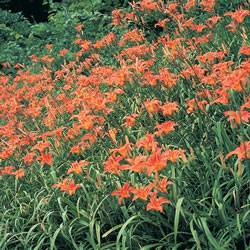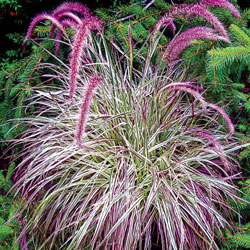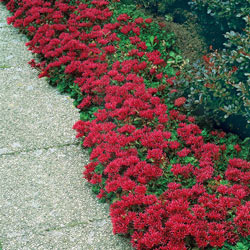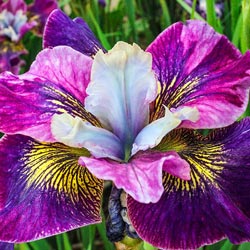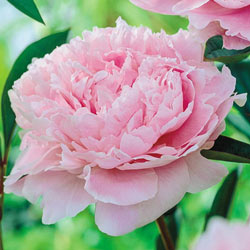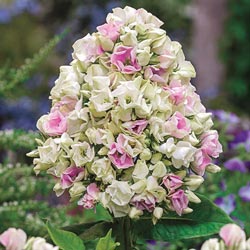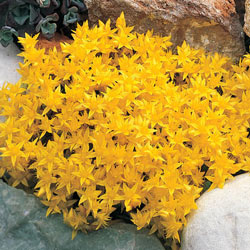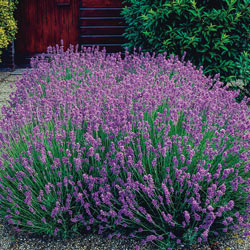These charming plants add color, texture, and dimension to your sunny garden spots. Annual or perennial sun plants perform best when they receive at least 4-6 hours of direct sunlight (of course, the more the merrier). Plant a few alongside the curb or driveway for an eye-popping show of color, or as a charming focal point anywhere! Michigan bulb offers perennials for the sun, including lush
lavender plants,
coneflowers and
sunflowers.
Other full sun plants include
Hummingbird Mint,
Black-Eyed Susans, and more! Check out our wide selection of bulbs, shrubs, perennials, and sun plants for sale to add some extra beauty to your garden.
What plants thrive in direct sunlight?
Nearly every garden has some areas that receive direct or mostly-direct sunlight. While many perennials and bulbs perform optimally in dappled or indirect light, some plants actually prefer direct sun. From grasses to flowers to sedums, many gorgeous species of plants look their brightest under the heat and glare of sunlight. A mix of sun-loving succulents, flowering bulbs, and bright perennials will give your garden's sunny spots plenty of color. Check out some of our favorite types of plants for full sun:
Coneflowers: Beloved for their height and bright colors, their appearance in cut arrangements, and their uncanny ability to attract butterflies, coneflowers are a perfect prairie plant. Coneflowers perform at their best in direct sunlight, or at least in locations where they receive six to eight hours of sunlight each day. If you live below zone 8, plant coneflowers in a place where they receive afternoon shade to avoid faded petals.
Daylilies: Available in a rainbow of colors, textures, and styles, daylilies are a staple in the sun garden. These beauties tend to grow in clumps, and work beautifully when planted in an eye-catching group. Plant daylilies in standalone clusters, or use them in borders or under tall-standing trees. Try mixing daylilies with various bloom times to keep a beautiful display all season long.
Grasses: While they're often used as fillers, grasses can be anything but dull. Use ornamental grasses to fill in beds and planters with texture and a multitude of hues. Ornamental grass is very low-maintenance, and some species offer feathery blooms and impressive height.
Geraniums: Geraniums produce their best blooms in full sun. Hardy geraniums, or "true" geraniums, produce somewhat fuller-looking blooms than the annual geraniums available in big box stores each year. As an added bonus, perennial geraniums come back year after year. Be sure to incorporate these bright beauties into your sunny garden.
Peonies: Known for their huge, tulle-like flowers and amazingly sweet scent, the delicate flowers of peonies are surprisingly tolerant of the sun. Peonies are available in taller shapes or shorter, shrub-like varieties, and they grow in gorgeous shades of white, pink, red, and violet. Truly the stunners of the sun garden, peonies welcome early summer in style.
Phlox: Tall phlox and creeping phlox are both extremely hardy and don't mind the heat and shine of the sun one bit. Use creeping varieties as ground cover, or add vertical interest with brightly-colored tall phlox.
Sedums: A type of succulent ground cover, sedums work well in rock gardens, beds, and borders. Try pairing these plants, which are tolerant of both heat and drought, with other sun-loving perennials or in a container with other succulents such as cacti or hens and chicks.
Wildflowers: When looking for the flowers that are best adapted to North American summers, don't overlook plants that are native to your region. Wildflowers and prairie flowers, such as rudbeckia, coneflower, yarrow, and windflowers, are naturally well-suited to endure direct, overhead light.
Don't forget that many varieties of flowering bulbs perform well in full sun, too. With the right combination of perennials and bulbs, the bright places in your landscape will be even brighter!
Where to grow full sun plants:
Your plant selections will depend upon your landscape's needs, and the requirements of your plants. Many plants can handle sun during part of the day--some plants that can't handle the hot afternoon sun can tolerate it in the morning. If you're gardening in a location that truly receives sunlight from sunup to sundown, be sure to choose true full-sun plants, like the ones mentioned above.
Full sun plants will thrive in an unprotected area of the landscape, such as a standalone bed or accent area in the yard. They'll also work along borders or walls that receive light in the morning (east-facing walls) and the afternoon (west-facing walls). If you have a very shady yard, don't despair of ever growing sun-loving plants. Many full-sun perennials will thrive in containers placed in just the right location.
How to care for full sun plants:
Full-sun plants are typically some of the lowest-maintenance plants in the garden. Sun-loving perennials usually prefer warm locations with well-draining soil, so don't plant them near low-lying areas or foundations where water collects. And, of course, make sure to choose planting sites that receive more than six to eight hours of sun per day!
Check the instructions for your individual perennial to learn any care specifics. In general, full-sun plants don't require a heavy amount of maintenance, although most perennials will benefit from deadheading after blooming. During hot and dry spells, water your sun plants in the morning, along the base of the plant—don't soak the leaves or petals. And most perennials can benefit from a light application of flower fertilizer after the blooming season has ended.
When do full-sun plants grow?
Because so many types of plants can handle full sun, you can ensure that the brighter points of your landscape always have something growing. Most full-sun perennials will be planted in the early spring, although some bare roots and bulbs will perform better in their first year if they are set in autumn. Sun-friendly perennials will bloom in late spring, summer, or even fall. Phlox, and peonies bloom in April or May in much of North America, while coneflowers, Rudbeckia, lavender and herbs will flower in midsummer. Dianthus, pansies, and mums will bloom right through autumn, and daylilies can bloom and re-bloom all through the growing season.
What are the best perennial flowers for full sun?
Depending upon your climate, many—or even most!—perennial flowers will be able to handle full sun. Peonies, daylilies and iris are popular for larger, grouped plantings. Lower-lying plants, such as phlox, sedums, and dwarf daylilies, work well in the fronts of beds and borders. No matter your location, you have plenty of options to create a bright and beautiful garden with perennials that don't merely tolerate the sun—they thrive in it!
